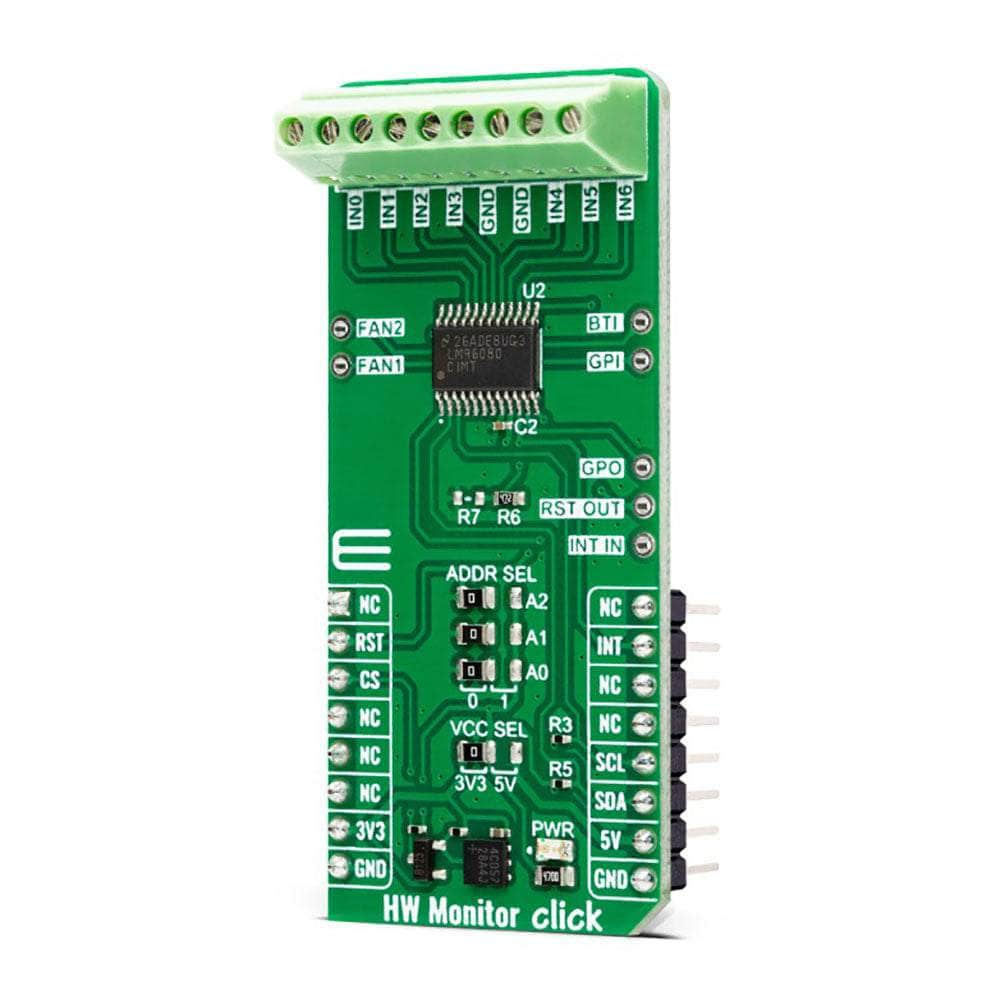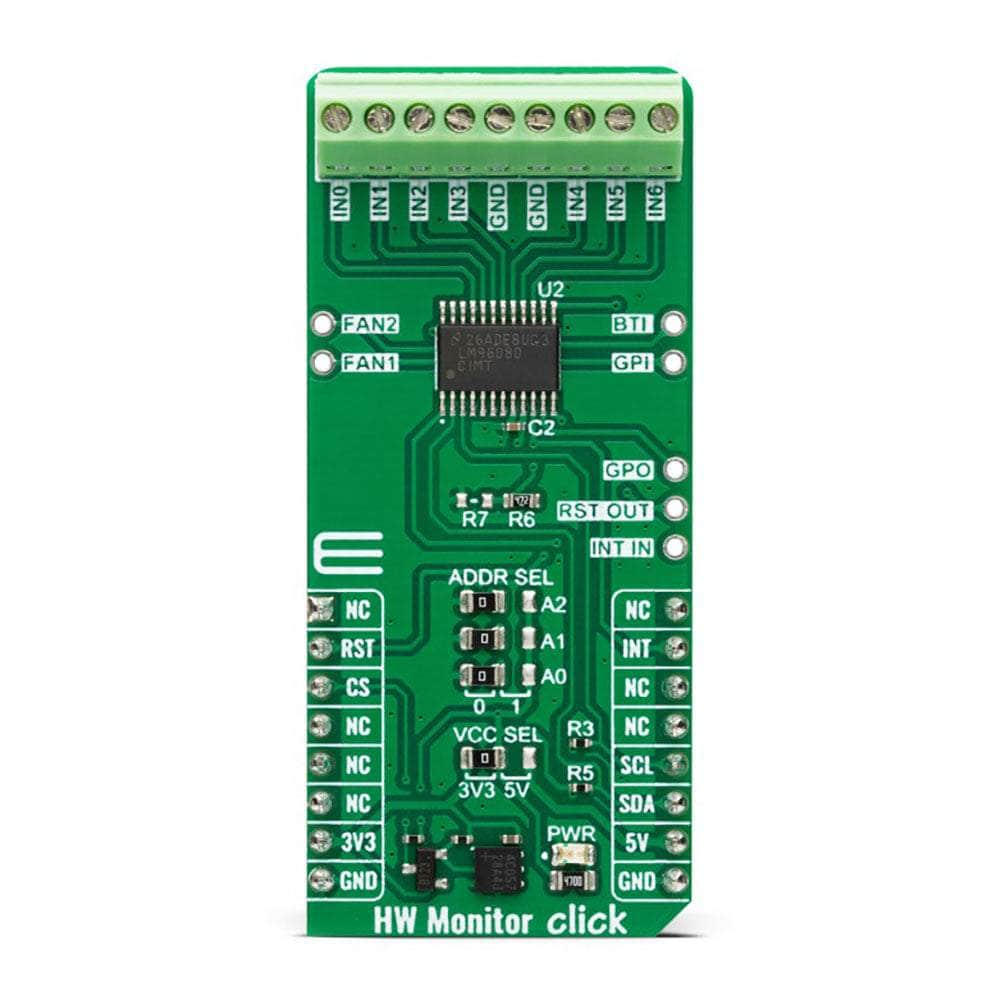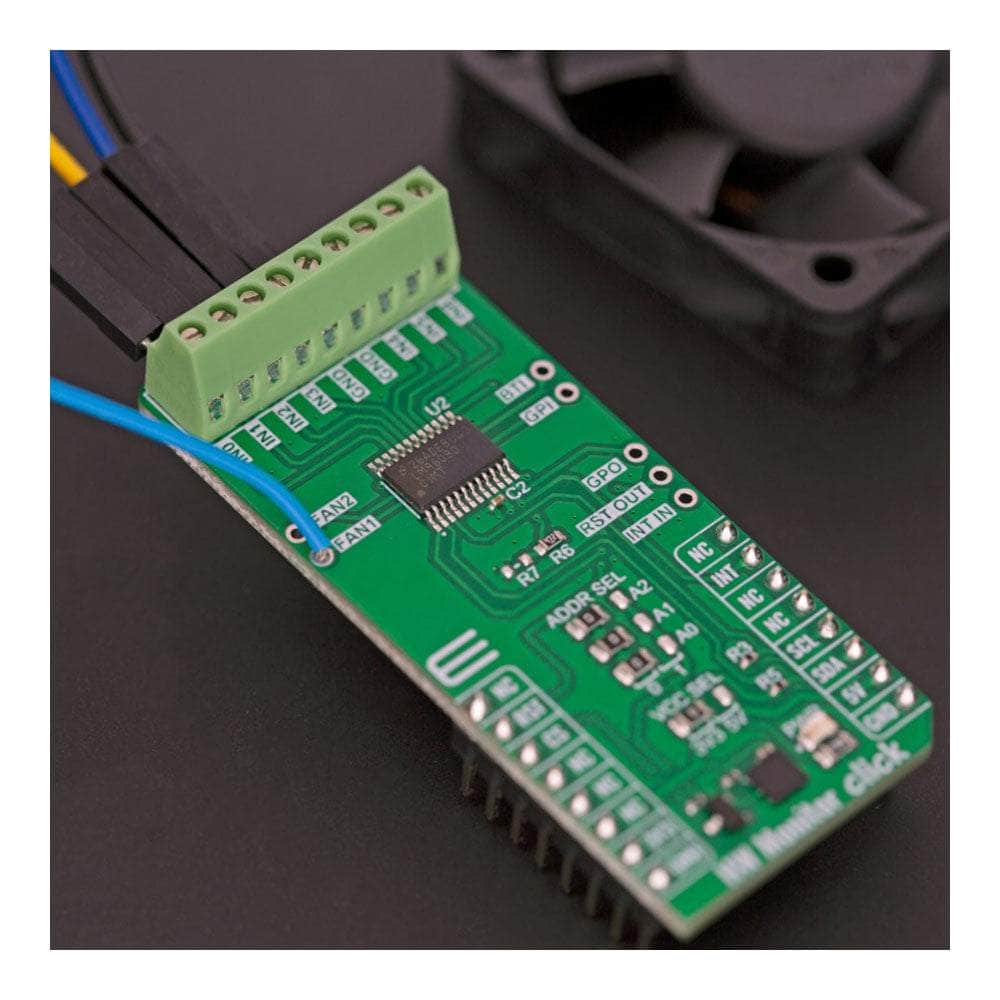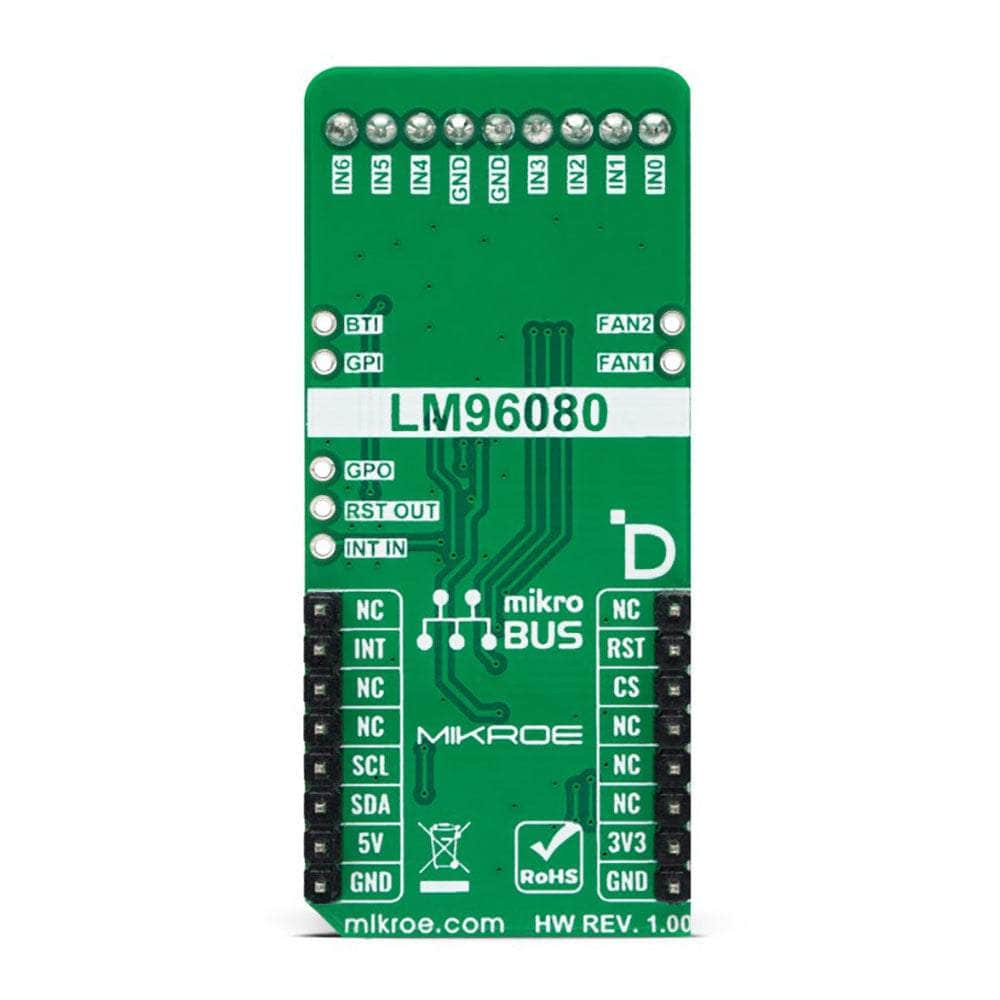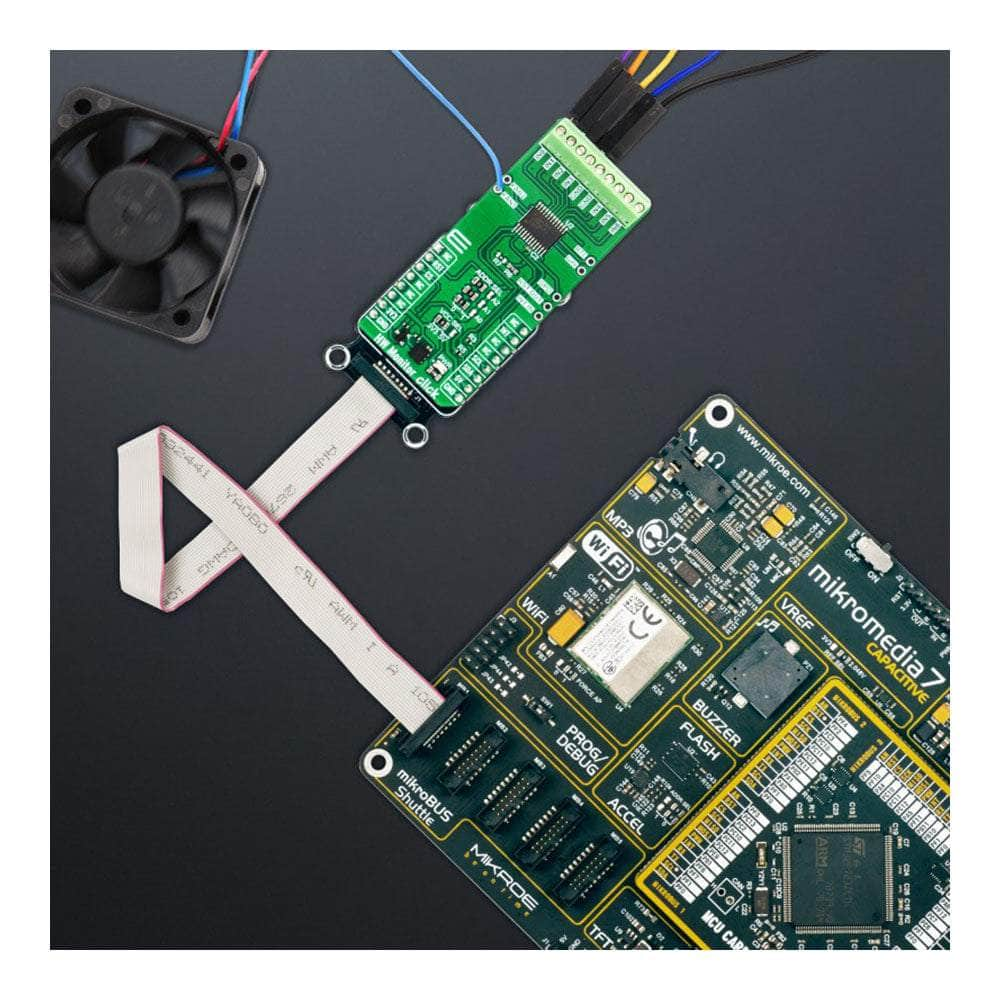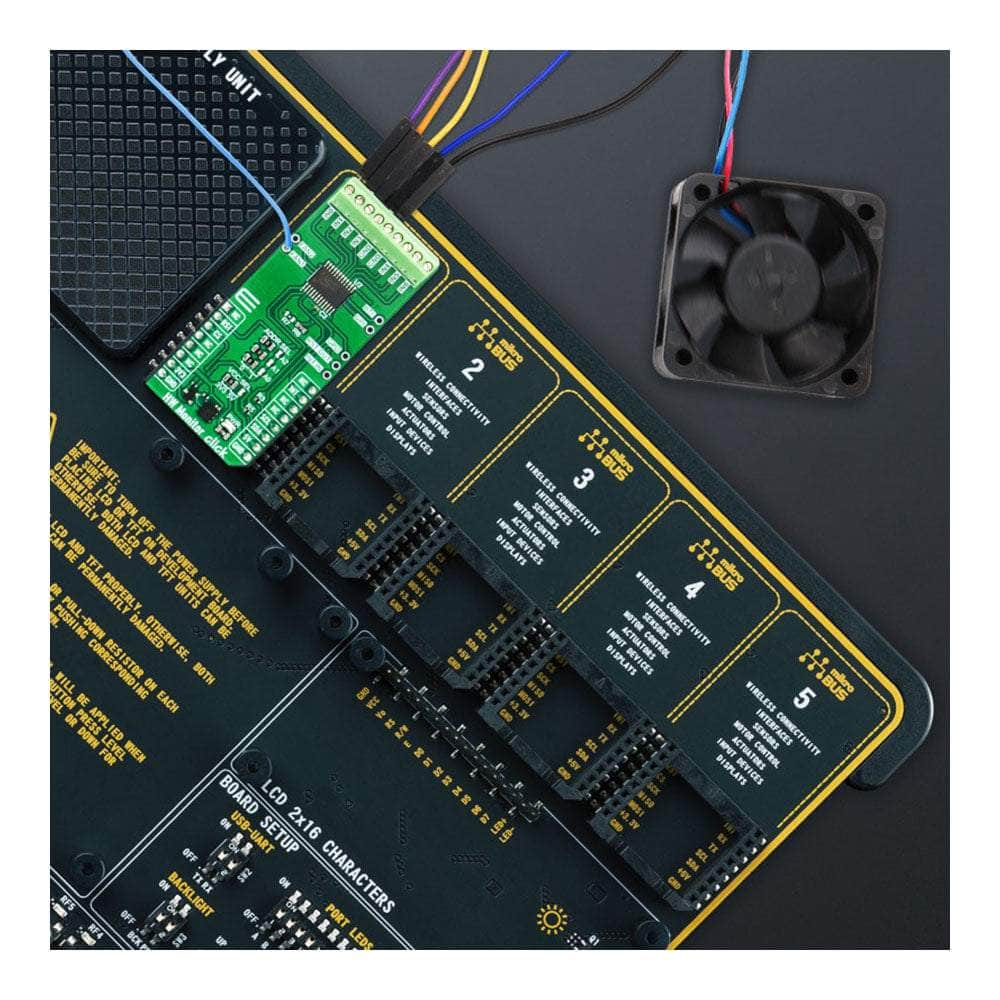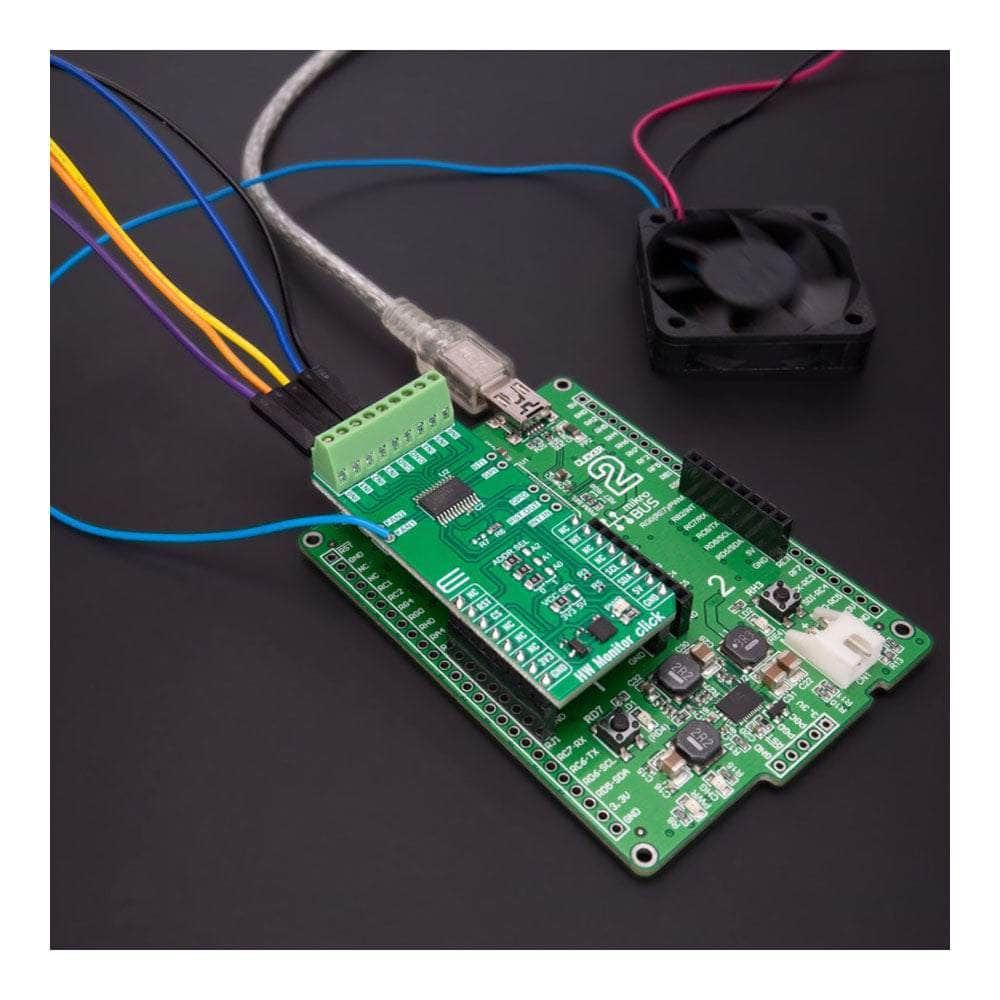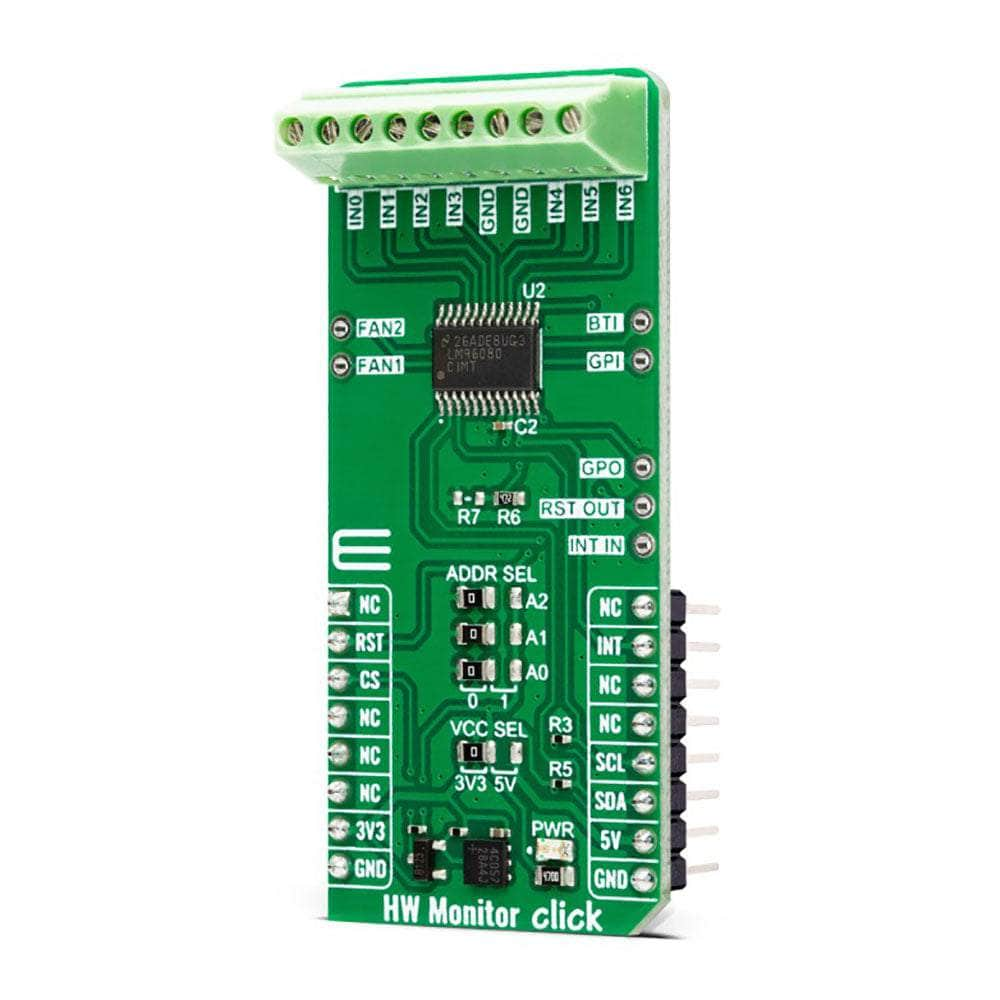
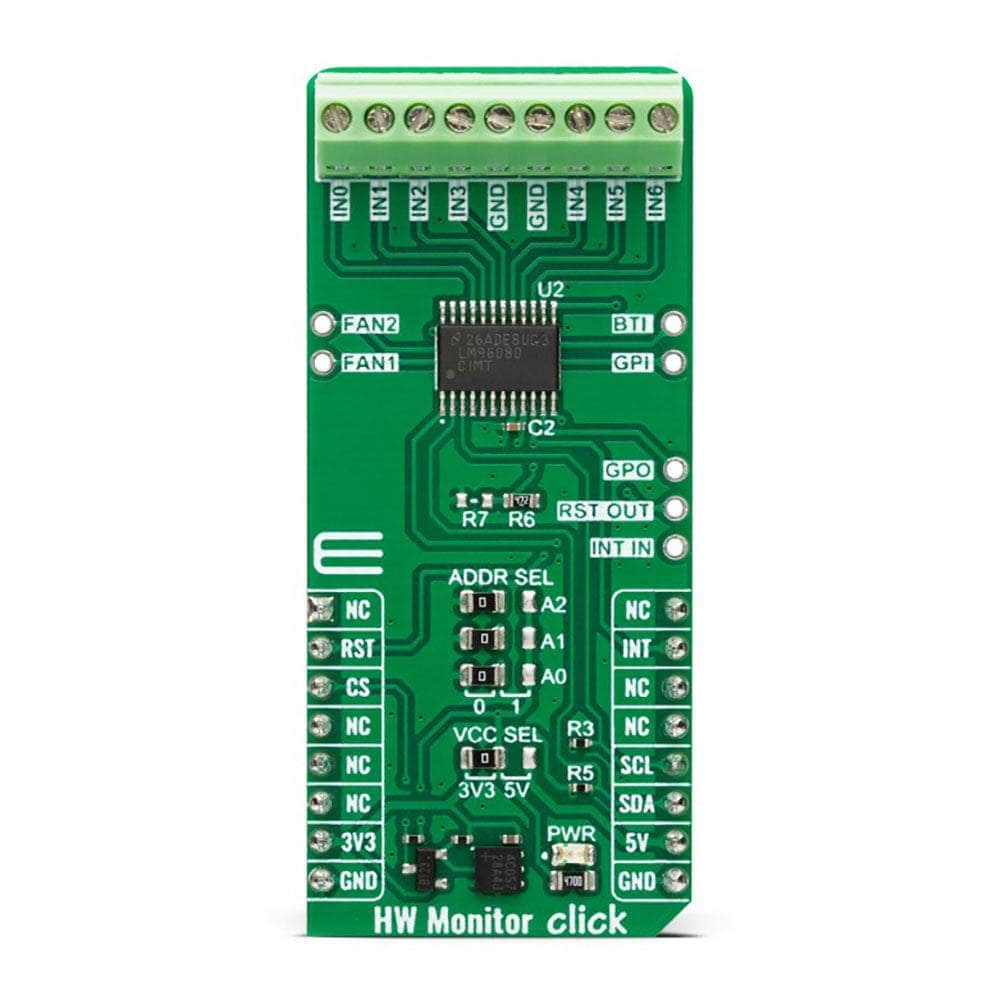
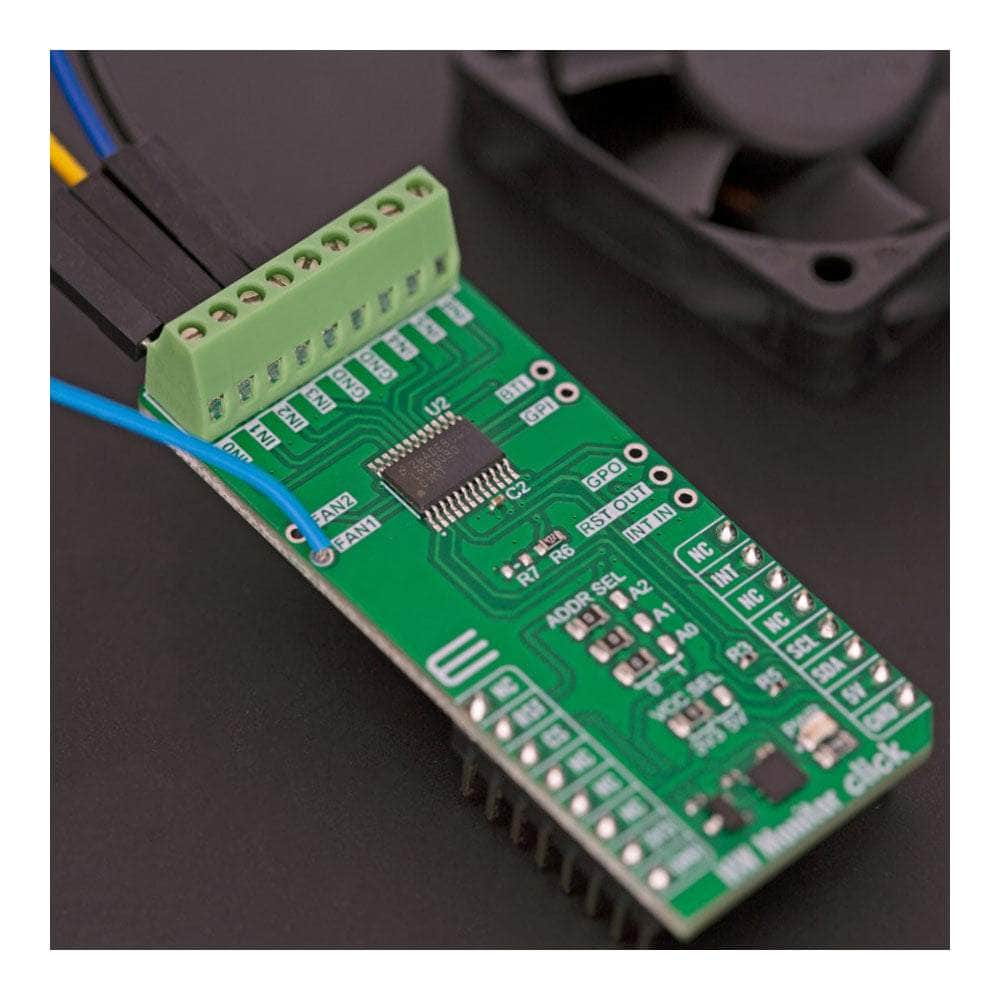
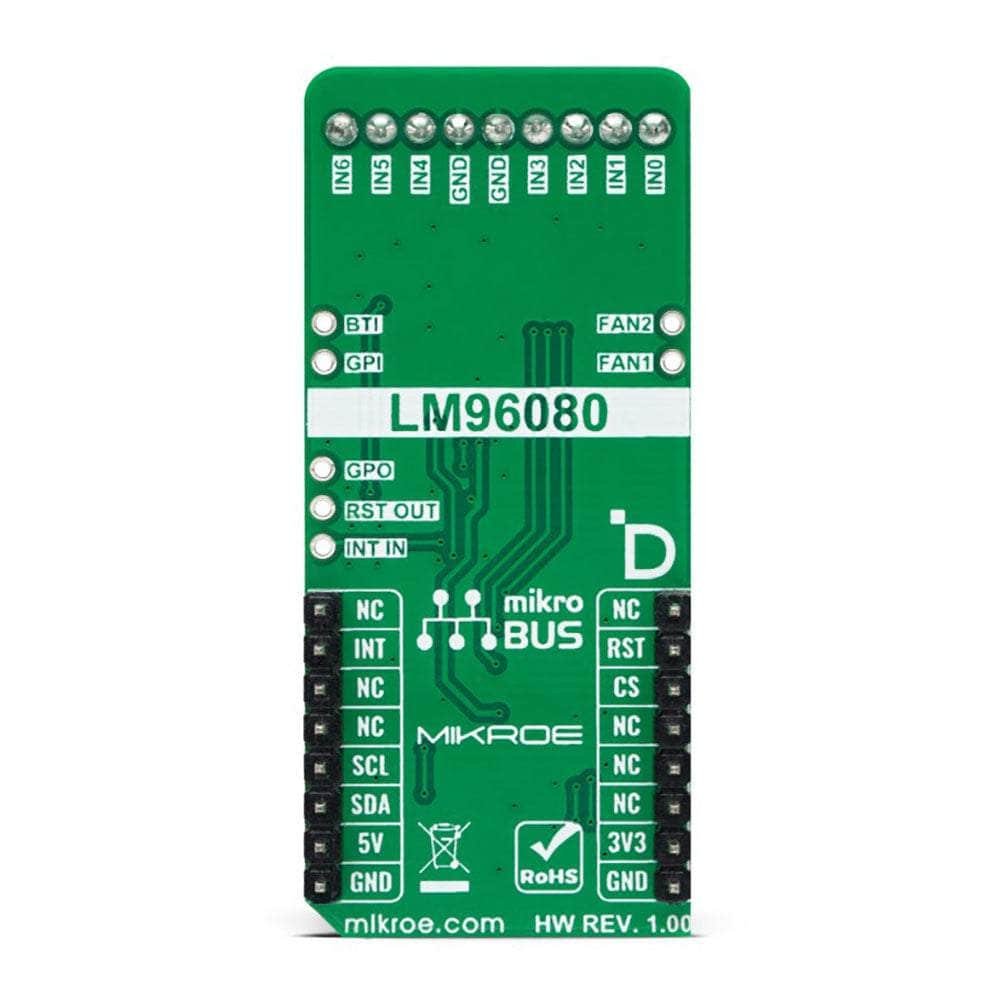
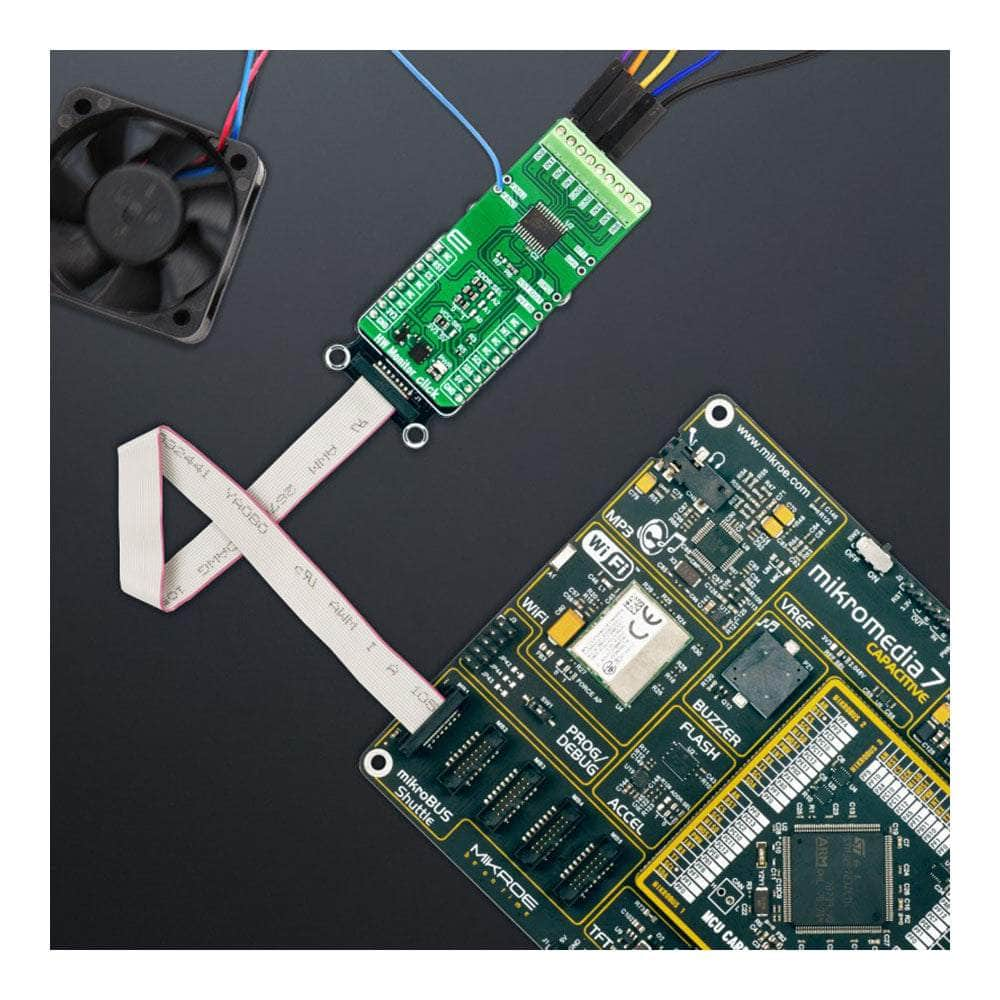
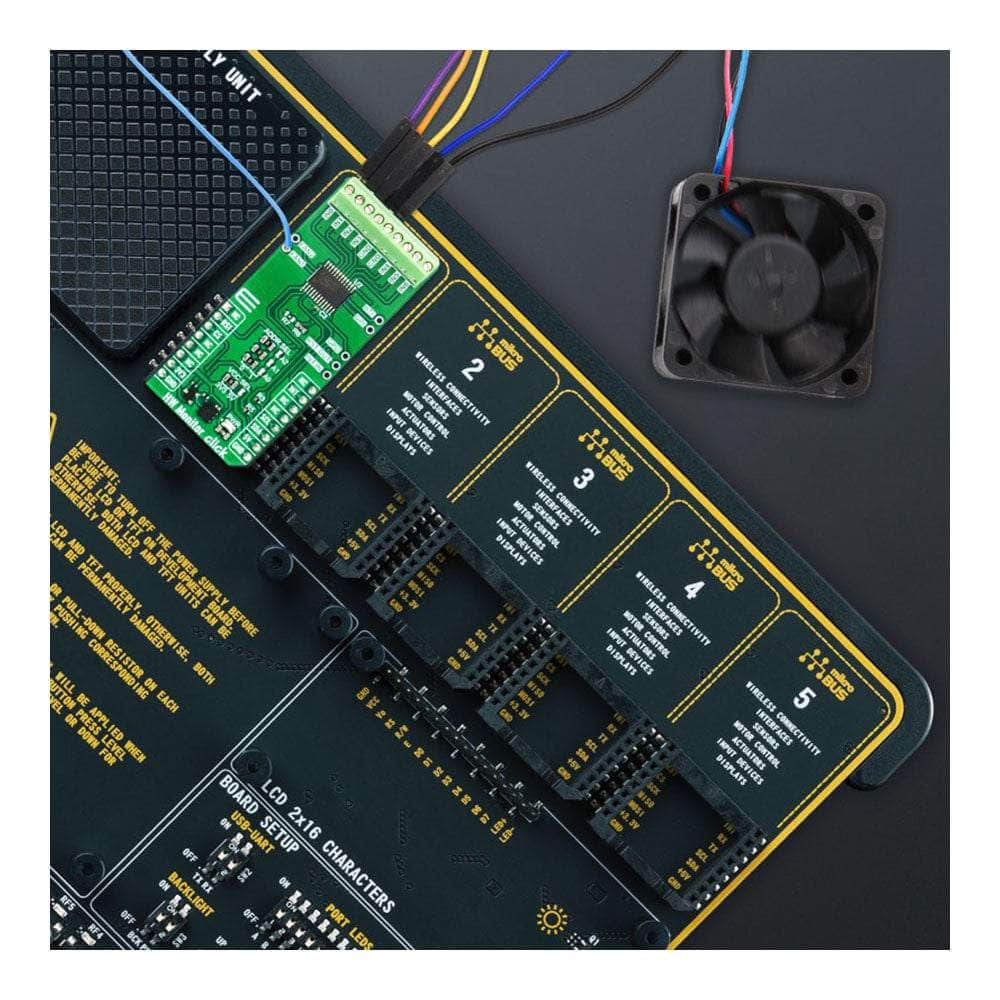
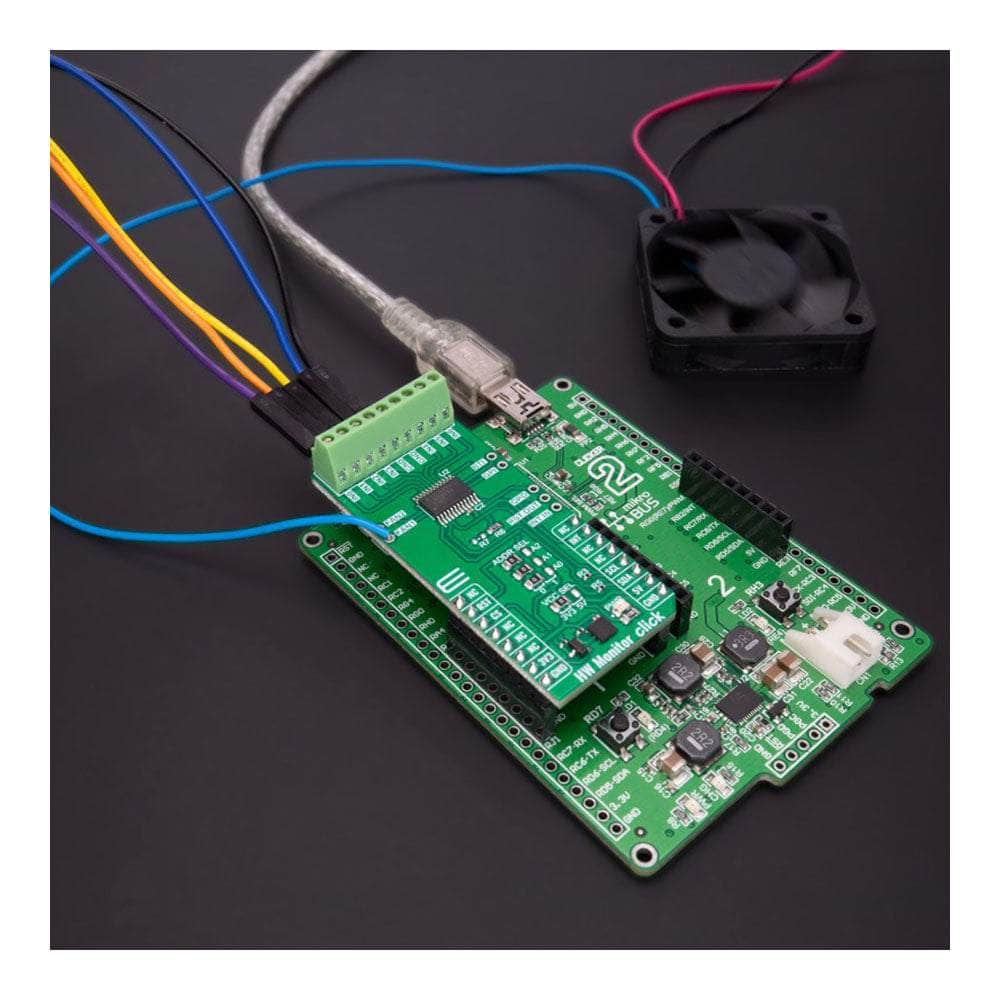
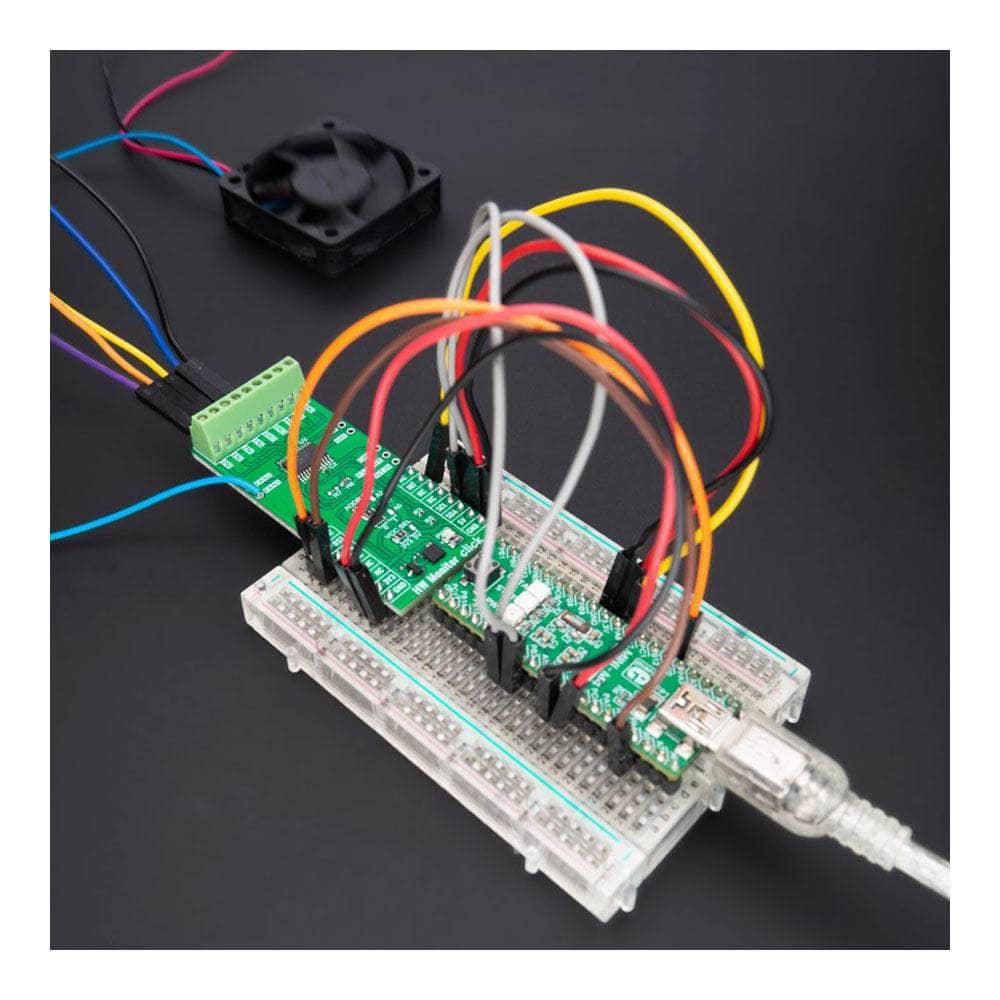
Key Features
Overview
Introducing the HW Monitor Click Board™: Your Ultimate Hardware Performance Regulator
Discover the power of the HW Monitor Click Board™, a compact add-on board designed to monitor and regulate the performance of various hardware components within an embedded system. This exceptional board is equipped with the LM96080, an I2C-configurable system hardware monitor from Texas Instruments. This advanced monitor contains a 10-bit delta-sigma ADC capable of measuring seven positive voltages and local temperature.
Experience Advanced Monitoring Features
The LM96080 also boasts two programmable fan speed monitoring inputs, along with other hardware monitoring functions such as chassis intrusion detection, additional external interrupt input, master reset for external purposes, and a sequencer performing watchdog window comparisons for all measured values. This versatile Click board™ is perfect for system thermal and hardware monitoring in a wide range of applications, including servers, electronic test equipment, instrumentation, communications infrastructure, and consumer electronics.
Supported by a mikroSDK-Compliant Library
Enhance your software development experience with the HW Monitor Click Board™, which is supported by a mikroSDK-compliant library. This library includes functions that simplify the development process, allowing you to focus on what's important: your project.
Ready for Use with mikroBUS™
The HW Monitor Click Board™ arrives as a fully tested product, ready for use on a system equipped with the mikroBUS™ socket. Don't wait any longer – experience the benefits of this advanced hardware monitoring solution today!
Downloads
How Does The HW Monitor Click Board™ Work?
The HW Monitor Click Board™ is based on the LM96080, a system hardware monitor from Texas Instruments that performs power supply, temperature, and fan monitoring for various embedded systems. The LM96080 provides seven analogue inputs spread across the terminals on the top of the board labelled from IN0 to IN6, a temperature sensor, a delta-sigma ADC, two fan speed counters, watchdog registers, and a variety of inputs and outputs on a single chip. It continuously converts analogue inputs to 10-bit resolution with a 2.5mV LSB, yielding input ranges of 0 to 2.56V. The analogue inputs are intended to connect to several power supplies in a typical communications infrastructure system.
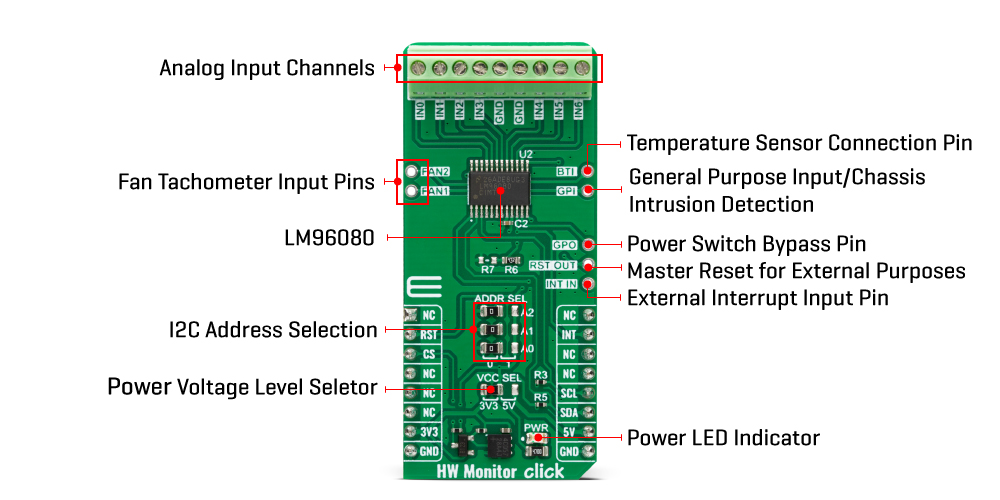
This Click board™ communicates with MCU using the standard I2C 2-Wire interface to read data and configure settings with a maximum frequency of 400kHz. The LM96080 includes an analog filter on the I2C lines that improves noise immunity and supports the timeout reset function on SDA and SCL pins, preventing I2C bus lockup. Also, the LM96080 allows choosing the least significant bits (LSB) of its I2C slave address using the SMD jumpers labelled ADDR SEL.
The LM96080 is especially suited to interface with linear and digital temperature sensors such as LM73, LM75, LM56, LM57, LM26, LM27, LM26LV, or other LM96080 via the BTI pin on one of the unpopulated headers. Temperature can be converted to a 9-bit or 12-bit two's complement word with resolutions of 0.5°C or 0.0625°C LSB, respectively. On the same header, in addition to the BTI pin, there is also a GPI pin, which, in addition to its function as a general-purpose input pin, can also serve as a chassis intrusion detection input. The chassis intrusion input is designed to accept an active high signal from an external circuit that latches, such as when the cover is removed from the computer.
Next in this board's series of additional features are the fan inputs, labelled FAN1 and FAN2, that can be programmed to accept either fan failure indicator programmed to be active high or active low or tachometer signals. Fan inputs measure the period of tachometer pulses from the fans, providing a higher count for lower fan speeds. The full-scale fan counts are 255 (8-bit counter), representing a stopped or slow fan. Based on a count of 153, nominal speeds are programmable from 1100 to 8800 RPM. Signal conditioning circuitry is also included to accommodate the slow rise and fall times.
The last header contains functions such as an external interrupt input INT IN, a master reset for external purposes RST OUT, and a single power switch pin GPO. The INT IN active low interrupt provides a way to chain the interrupts from other devices through the LM96080 to the host, the RST_OUT is intended to provide a master reset to devices connected to this line, while the GPO pin is an active low NMOS open drain output intended to drive an external power PMOS for software power control or can be utilized to control power to a cooling fan. The LM96080 also possesses a general reset signal routed on the RST pin of the mikroBUS™ socket to reset the LM96080, and an additional interrupt signal, routed on the INT pin of the mikroBUS™ socket whenever some of the external interrupts like INT_OUT, interrupt from the temperature sensor, or when a chassis detection event occurs.
The HW Monitor Click Board™ can operate with either 3.3V or 5V logic voltage levels selected via the VCC SEL jumper. This way, both 3.3V and 5V capable MCUs can use the communication lines properly. However, the Click board™ comes equipped with a library containing easy-to-use functions and an example code that can be used, as a reference, for further development.
SPECIFICATIONS
| Type | ADC |
| Applications | It can be used for system thermal and hardware monitoring for various servers, electronic test equipment and instrumentation, communications infrastructure, consumer electronics, and more |
| On-board modules | LM96080 - system hardware monitor from Texas Instruments |
| Key Features | Seven positive voltage inputs with 10-bit resolution, local temperature sensing, two programmable fan speed monitoring inputs, chassis intrusion detection, watchdog comparison of all monitored values, power switch bypass, external interrupt and master reset, and more |
| Interface | I2C |
| Compatibility | mikroBUS |
| Click board size | L (57.15 x 25.4 mm) |
| Input Voltage | 3.3V or 5V |
PINOUT DIAGRAM
This table shows how the pinout of the HW Monitor Click Board™ corresponds to the pinout on the mikroBUS™ socket (the latter shown in the two middle columns).
| Notes | Pin |  |
Pin | Notes | |||
|---|---|---|---|---|---|---|---|
| NC | 1 | AN | PWM | 16 | NC | ||
| Reset | RST | 2 | RST | INT | 15 | INT | Interrupt |
| NC | 3 | CS | RX | 14 | NC | ||
| NC | 4 | SCK | TX | 13 | NC | ||
| NC | 5 | MISO | SCL | 12 | SCL | I2C Clock | |
| NC | 6 | MOSI | SDA | 11 | SDA | I2C Data | |
| Power Supply | 3.3V | 7 | 3.3V | 5V | 10 | 5V | Power Supply |
| Ground | GND | 8 | GND | GND | 9 | GND | Ground |
ONBOARD SETTINGS AND INDICATORS
| Label | Name | Default | Description |
|---|---|---|---|
| LD1 | PWR | - | Power LED Indicator |
| JP1 | VCC SEL | Left | Power Voltage Level Selection 3V3/5V: Left position 3V3, Right position 5V |
| JP2-JP4 | ADDR SEL | Left | I2C Address Selection 0/1: Left position 0, Right position 1 |
| J1 | - | Unpopulated | Temperature Sensor Connection/Chassis Intrusion Detection |
| J2 | - | Unpopulated | External Interrupt/Master Reset/Power Switch Bypass |
| J3 | - | Unpopulated | Fan Tachometer Input |
HW MONITOR CLICK ELECTRICAL SPECIFICATIONS
| Description | Min | Typ | Max | Unit |
|---|---|---|---|---|
| Supply Voltage | 3.3 | - | 5 | V |
| Analog Input Voltage Range | 0 | - | 2.56 | V |
| ADC Resolution | - | 10 | - | bit |
| General Information | |
|---|---|
Part Number (SKU) |
MIKROE-5684
|
Manufacturer |
|
| Physical and Mechanical | |
Weight |
0.02 kg
|
| Other | |
Country of Origin |
|
HS Code Customs Tariff code
|
|
EAN |
8606027384929
|
Warranty |
|
Frequently Asked Questions
Have a Question?
-
Is the HW Monitor Click Board™ ready to use?
Yes, the HW Monitor Click Board™ comes as a fully tested product, ready for use on a system equipped with the mikroBUS™ socket.
-
What software development support does the HW Monitor Click Board™ have?
The HW Monitor Click Board™ is supported by a mikroSDK-compliant library, which includes functions that simplify software development.
-
What is the HW Monitor Click Board™ suitable for?
This Click board™ is suitable for system thermal and hardware monitoring for various servers, electronic test equipment and instrumentation, communications infrastructure, consumer electronics, and more.
-
What can the LM96080 measure?
The LM96080 can measure seven positive voltages, local temperature, two programmable fan speed monitoring inputs, chassis intrusion detection, additional external interrupt input, master reset for external purposes, and a sequencer performing watchdog window comparisons, all measured values.
-
What is the HW Monitor Click Board™?
The HW Monitor Click Board™ is a compact add-on board used to monitor and regulate the performance of various hardware components within an embedded system. It features the LM96080, an I2C-configurable system hardware monitor from Texas Instruments that contains a 10-bit delta-sigma ADC capable of measuring seven positive voltages and local temperature.

